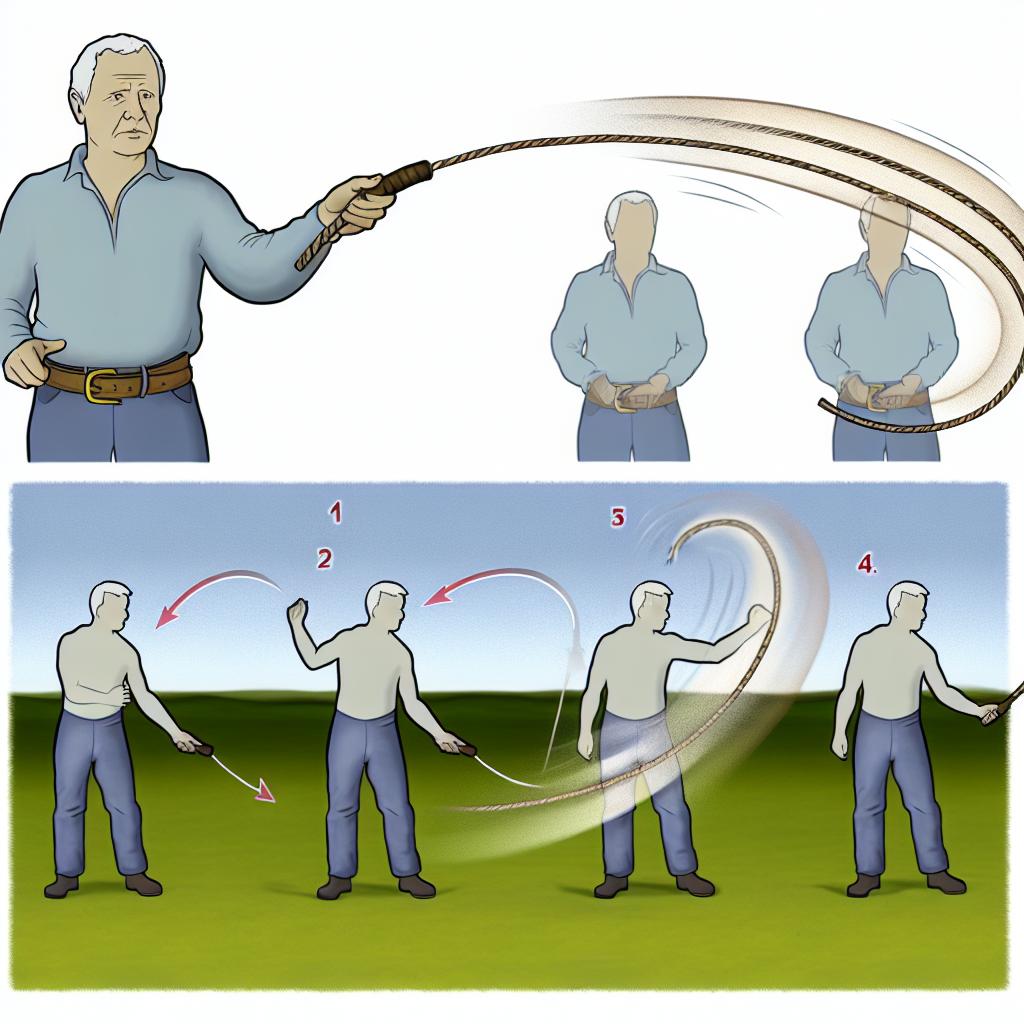
The basics of cracking a bullwhip.
Understanding the Mechanics of a Bullwhip
A bullwhip is a fascinating tool, traditionally associated with livestock handling but also used in performance arts and sports. Its defining feature is the signature crack it produces, a sound that arises due to the unique motion and physics involved when the whip is used skillfully. This crack, which resembles a small sonic boom, is a result of the tip of the whip moving faster than the speed of sound. The mechanics behind this phenomenon are as intriguing as they are educational, offering insights into both the physical construction and functional dynamics of the whip.
The Construction of a Bullwhip
To appreciate how a bullwhip works, it is important to first understand its basic components. A bullwhip is typically divided into three primary sections: the handle, the thong, and the cracker. Each of these parts plays a critical role in the whip’s operation.
The Handle: This is the part of the whip grasped by the user. It is designed to provide a firm but comfortable grip, allowing for precision and control during use. The handle is neither rigid nor flexible, serving as a stable base that facilitates the transmission of energy to the whip.
The Thong: The thong is the whip’s most prominent part. It is a long, supple section that tapers from the handle to the tip. Its flexibility is key to the whip’s operation, allowing it to transmit motion efficiently. As the thong narrows towards its end, it plays a crucial role in accelerating the motion initiated by the user.
The Cracker: Located at the very end of the thong, the cracker is a small piece that is responsible for producing the whip’s crack. It is typically made of light, fibrous material, and its sole purpose is to break the sound barrier when the whip is cracked properly.
Dynamics of Cracking a Bullwhip
The process by which a bullwhip produces its distinctive sound involves a fascinating application of physics. When the whip user flicks the handle, energy is imparted into the whip. This energy travels down the length of the thong, gaining speed due to the whip’s tapered design. This increase in speed is akin to the behavior of water accelerating as it flows through a narrowing river channel.
At the end of this journey is the cracker. Because the energy is concentrated in this small, light component, it achieves exceedingly high velocities. Once the speed of the cracker surpasses the speed of sound, a small sonic boom occurs, resulting in the characteristic cracking noise of the bullwhip.
Learning to Crack a Bullwhip
Mastering the art of using a bullwhip requires practice and an understanding of the technique. It is both an art and a science, demanding precision and controlled force. For individuals interested in learning this skill, several foundational techniques can enhance effectiveness and safety:
Grip: To begin, it is crucial to hold the handle with a firm yet flexible grip. Overgripping can impede your ability to transmit the necessary energy efficiently; thus, finding a balance is key.
Stance: Your body position plays a significant role. Stand with your feet shoulder-width apart. This stance provides a stable base, allowing for better control of the whip.
Motion: The core of using a bullwhip is a smooth, fluid motion. This involves coordinating wrist and arm actions to generate and maintain the necessary energy flow through the whip. It is not about power but about technique.
Safety Considerations
Safety is paramount when handling a bullwhip. Given the speeds involved and the force exerted, a mishap can lead to injury. Awareness and caution are indispensable parts of using a bullwhip safely.
First, always be mindful of your surroundings. Ensure that you have ample space to operate the whip without endangering yourself or others. The whip’s reach can be greater than expected, and it is easy to misjudge distance, potentially striking nearby objects or persons.
In addition, protective measures such as eyewear should be considered, especially when practicing. Eyewear can help prevent ocular injuries from accidental contacts or the crack of the whip itself.
Lastly, routine maintenance of your bullwhip is necessary to sustain its longevity and performance. Regular checks should be conducted to identify wear and tear, particularly in the thong. Proper care extends to the cracker, which may require periodic replacement to ensure it functions as intended.
Further Resources
For those passionate about delving deeper into the world of bullwhip usage, numerous resources offer both education and community. Workshops provide hands-on experience and direct feedback from seasoned practitioners, which can be invaluable in mastering advanced techniques. Additionally, a wealth of instructional guides exists, both in print and online, offering step-by-step instructions and visual demonstrations.
Engagement with these resources not only improves proficiency but also enhances appreciation for the rich history and tradition associated with the bullwhip. Community groups or clubs dedicated to whip cracking and related disciplines are excellent fora for exchanging tips, sharing experiences, and pushing the boundaries of what one can achieve with a bullwhip. While the bullwhip is often perceived as merely a tool or a performance prop, its use is an art form steeped in technique, science, and tradition.